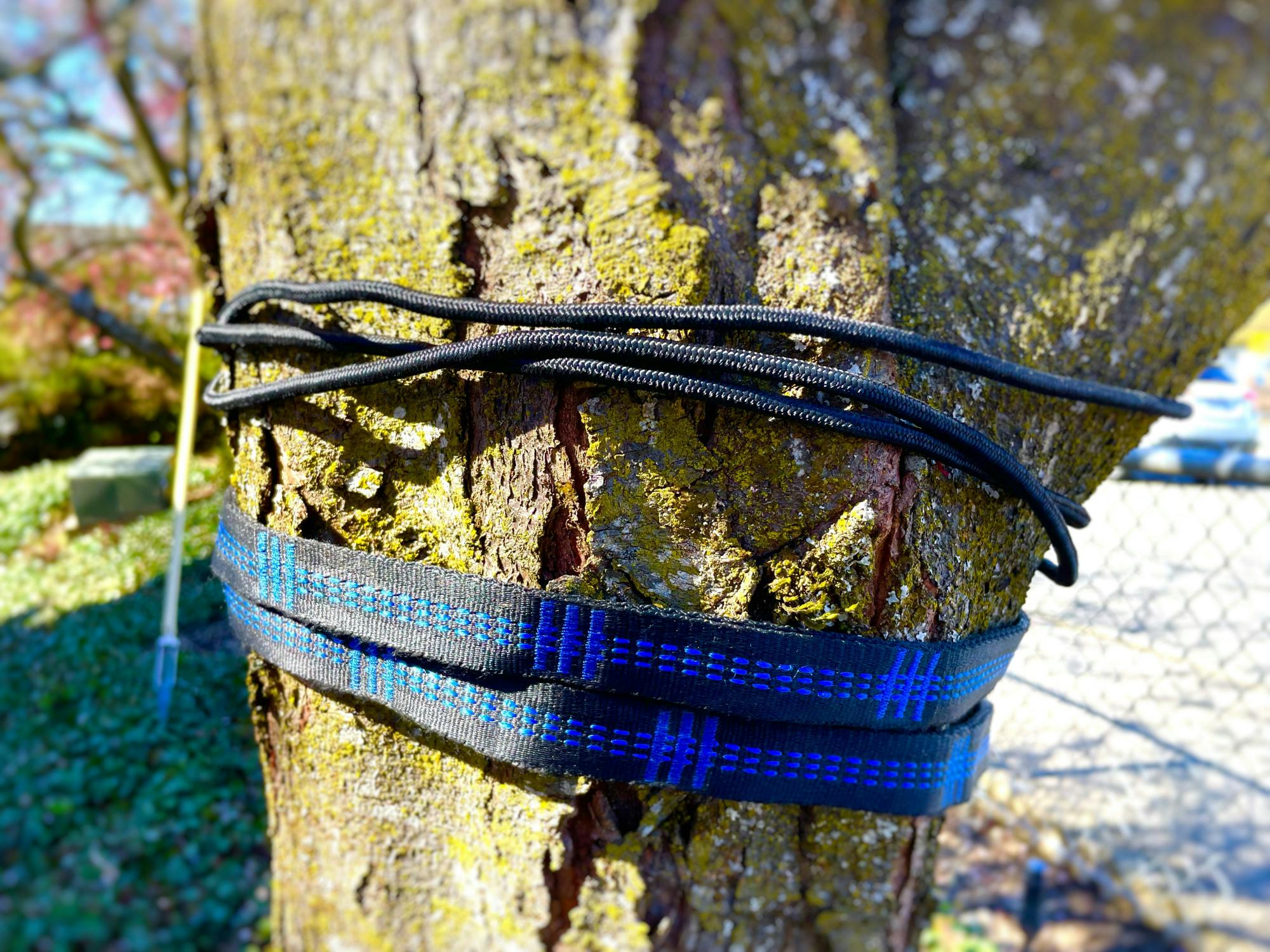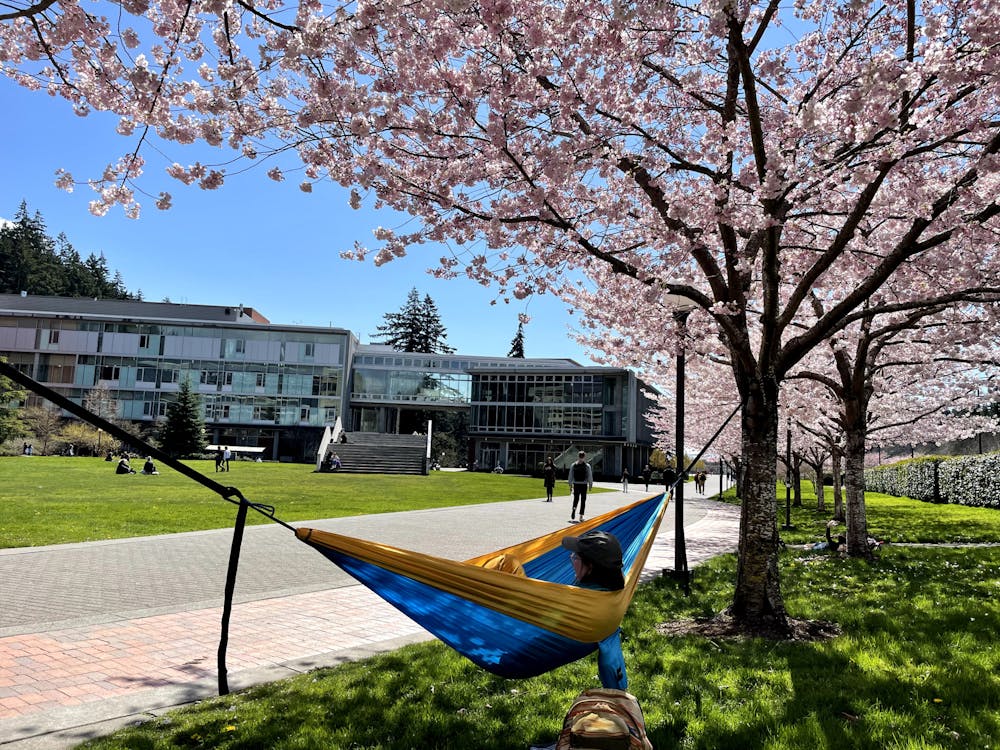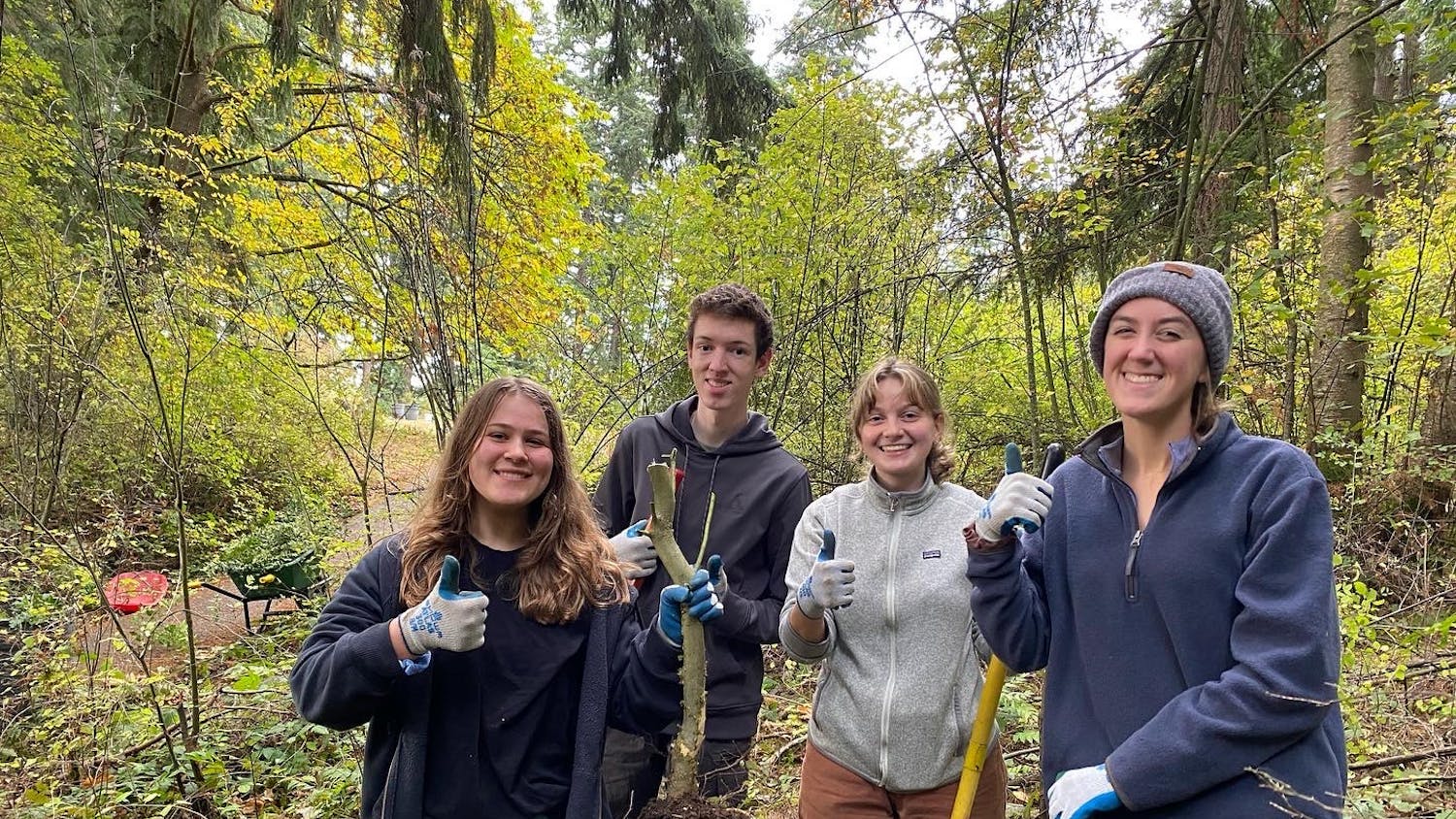It is common practice to go outside and hammock in Whatcom County when the weather is nice. However, hammocks can cause damage to the trees they hang on.
National and state parks follow the guidelines of the Leave No Trace policy for hammock restrictions.
This policy says to “use straps that are at least 1-1.5 inches wide” and recommends having “straps made of webbing” that “will limit girdling and bark damage.” A larger strap allows for a better distribution of weight and tension on the tree's bark.
Think of it this way: put a rubber band around your finger and pull. Now, put a shoelace around your finger and pull. Lastly, put a belt strap around your finger and pull. Which one hurts the least?
As the width of the strap goes up, the amount of damage to the tree goes down.

Image of paracord wrapped around a tree on campus. Paracords can be more harmful to trees than straps that are wider than one inch. // Photo by Zen Hill
Local Bellingham resident and Western Washington University student Vivien Verrue loves to hammock.
Verrue said she likes to hammock at least once a week — mostly in the spring, fall and summer.
Her favorite spots to hammock are “random places on Chuckanut by the water or Larrabee State Park,” she said.
Trees help absorb water to limit flooding and erosion as well as provide a home for insects and animals while producing oxygen for humans.
“Trees are important for the climate crisis,” said Michael Feerer, executive director of the Whatcom Million Trees Project. “They provide habitat and diversity.”
The Whatcom Million Trees Project is a nonprofit organization that has been trying to protect and grow the county's trees since 2021.
According to Feerer, trees also provide an emotional and well-being piece to those that live among them.
The Whatcom Million Trees Project hosts work parties to plant trees and remove English ivy from mature trees in local parks and greenways.
Feerer said work parties are an opportunity for volunteers to learn about the importance of environmental awareness.
“They see firsthand the damage that is being done to trees,” said Feerer.
Hammocks can’t directly kill a tree, but they can make it susceptible to life-threatening damage due to the stripping and weakening of bark that paracord and thin straps can cause.
The U.S. Forest Service defines the anatomy of a tree in six parts. The outer three parts of a tree are the layers that can be damaged by hammocks.
The layer directly beneath the outer and inner bark is called the cambium cell layer. This is “the growing part of the trunk,” which “annually produces new bark and new wood,” according to the U.S. Forest Service.
The cambium layer is the last layer of protection before reaching the tree's sapwood layer. The Forest Service described this layer as “the tree's pipeline for water moving up to the leaves.”
If the cambium layer is exposed, it is then susceptible to damage by the surrounding environment. Insects, animals, fungi and weather can all damage the tree.
Having wide hammock straps limits the stress on the tree's bark and protects the living layer that needs to be healthy for the tree to live.
Zen Hill (he/him) is a sports reporter for The Front. He is studying journalism with a public relations focus with hopes of becoming a sports broadcaster. He comes from Julian, a small town in San Diego County where he grew up playing basketball, soccer, track and field and baseball.






